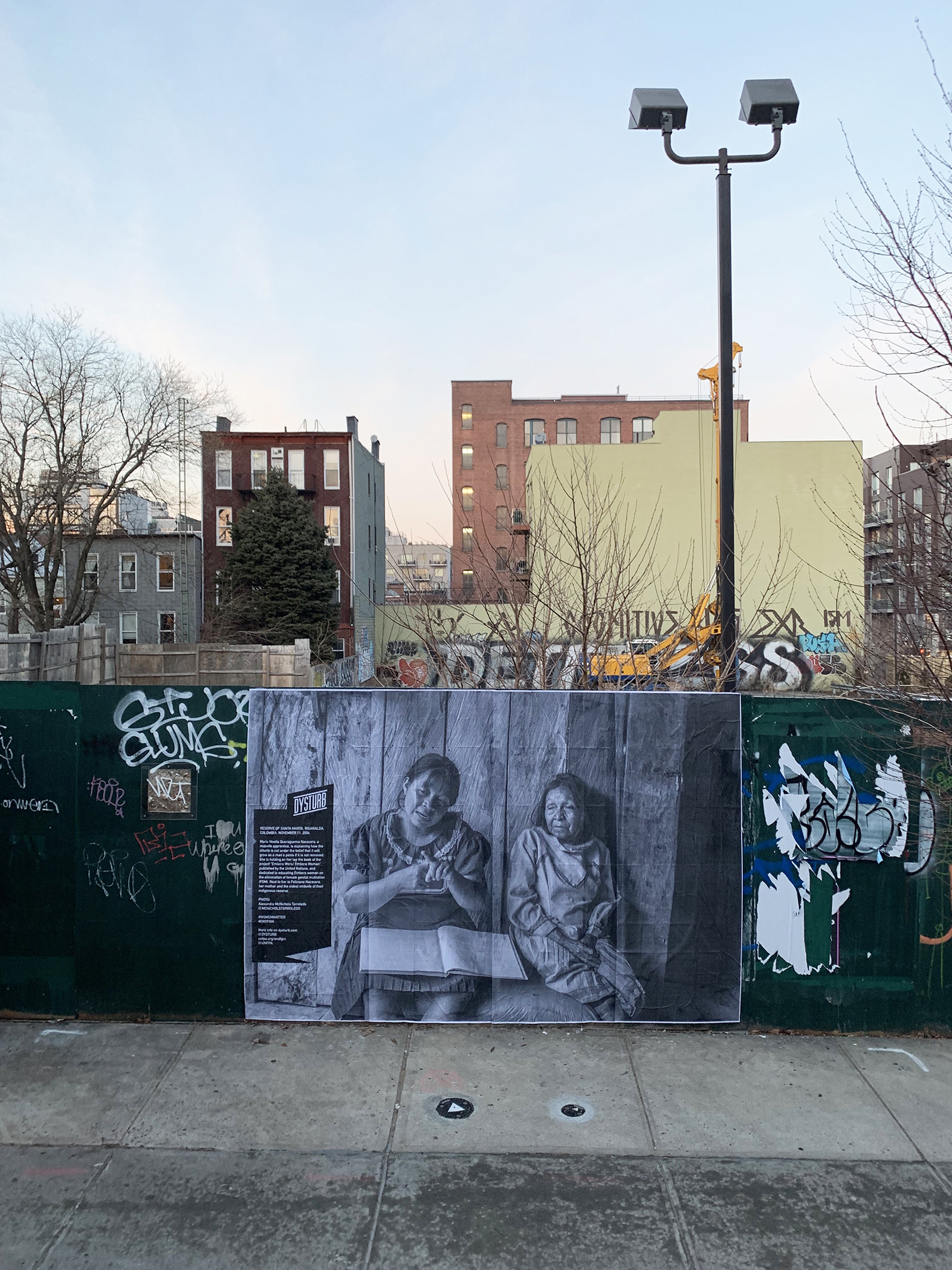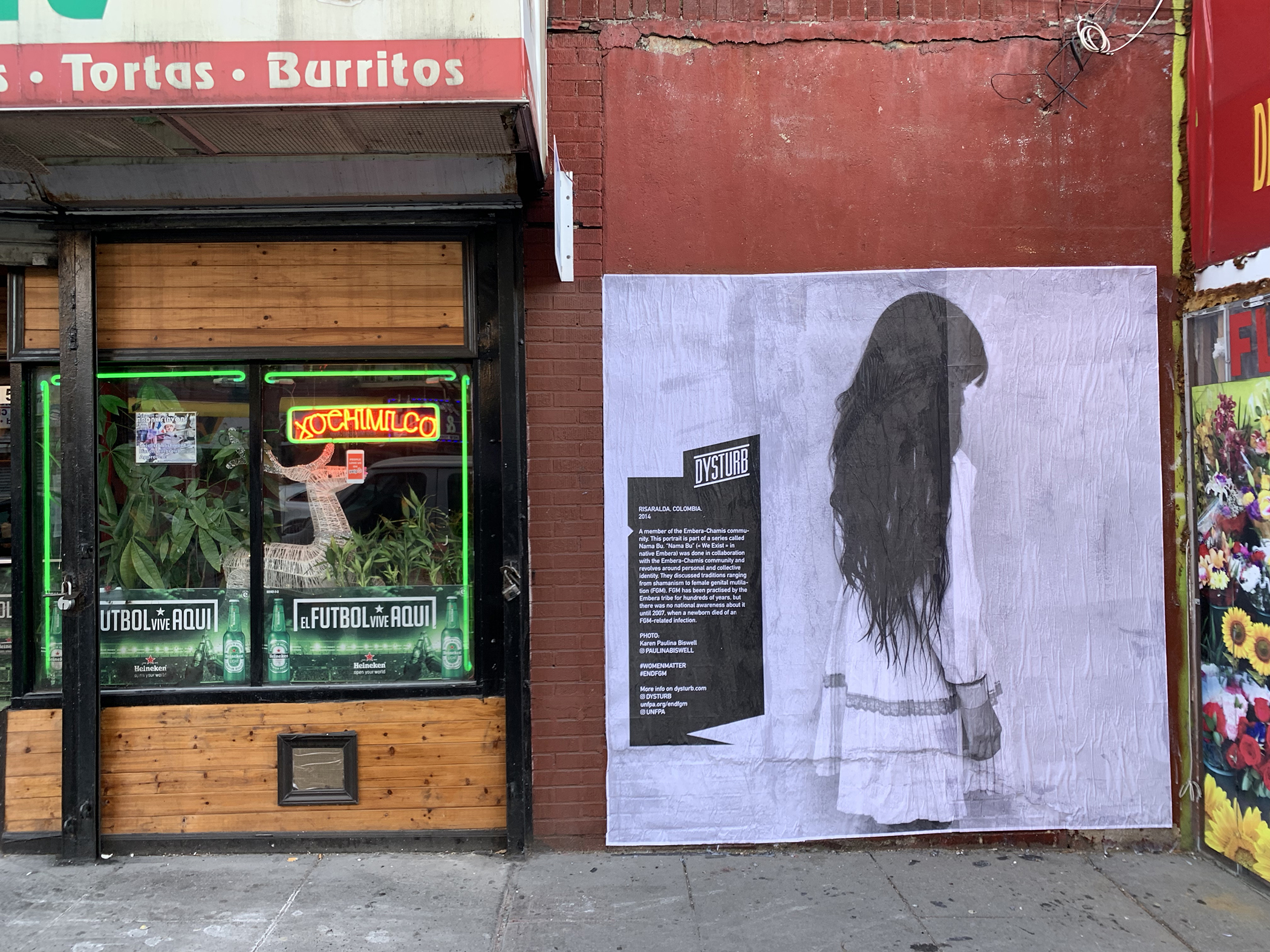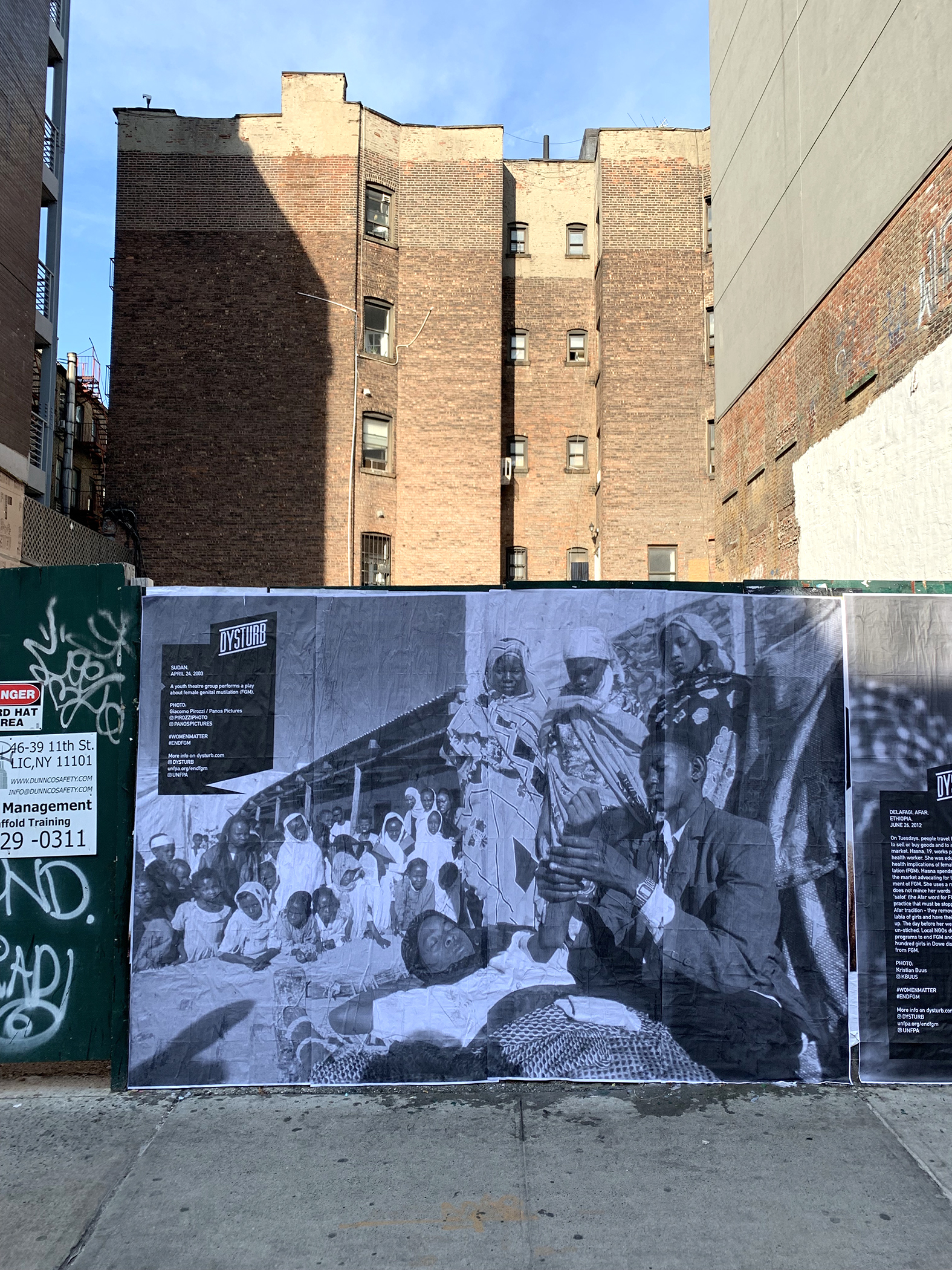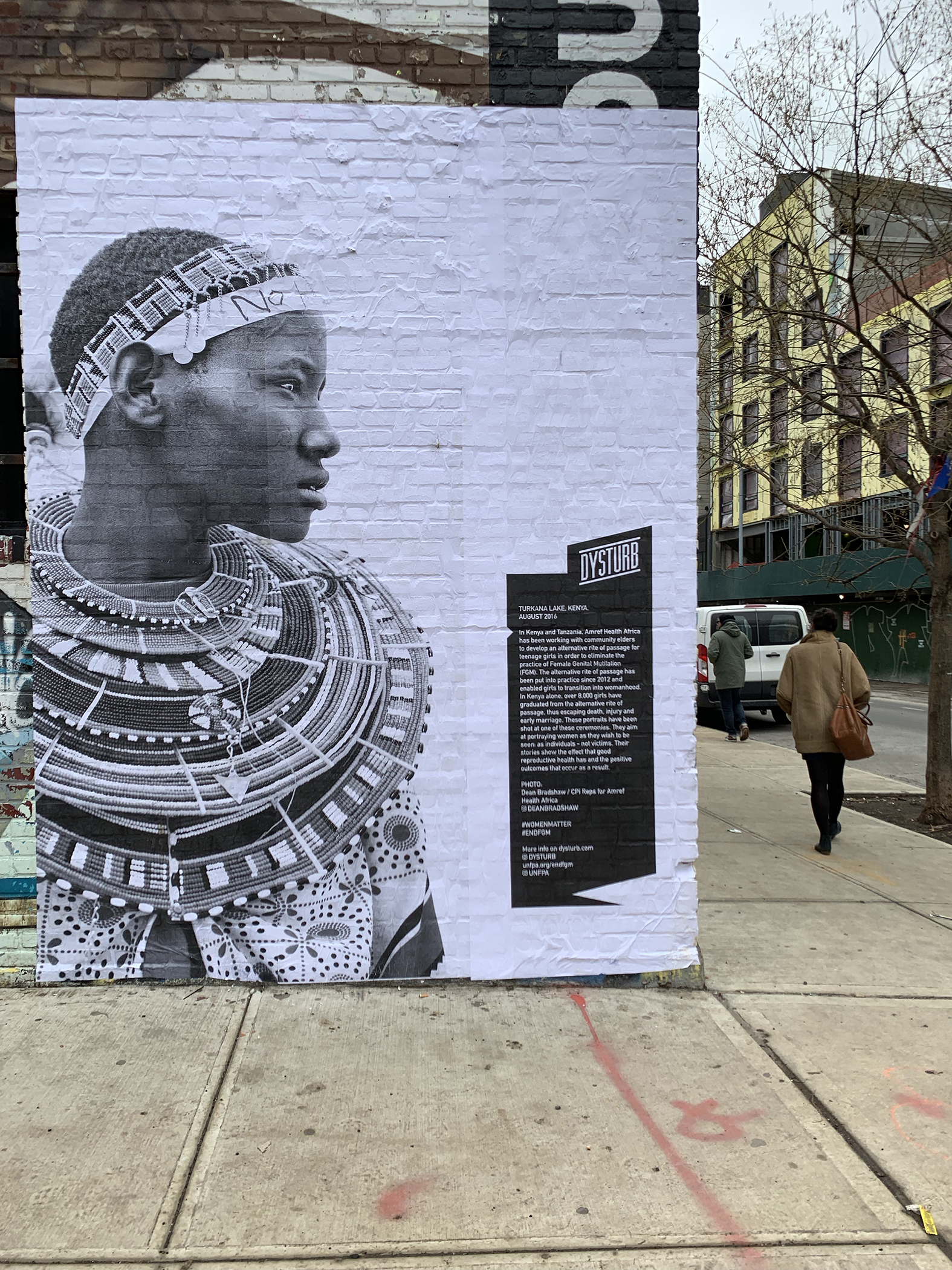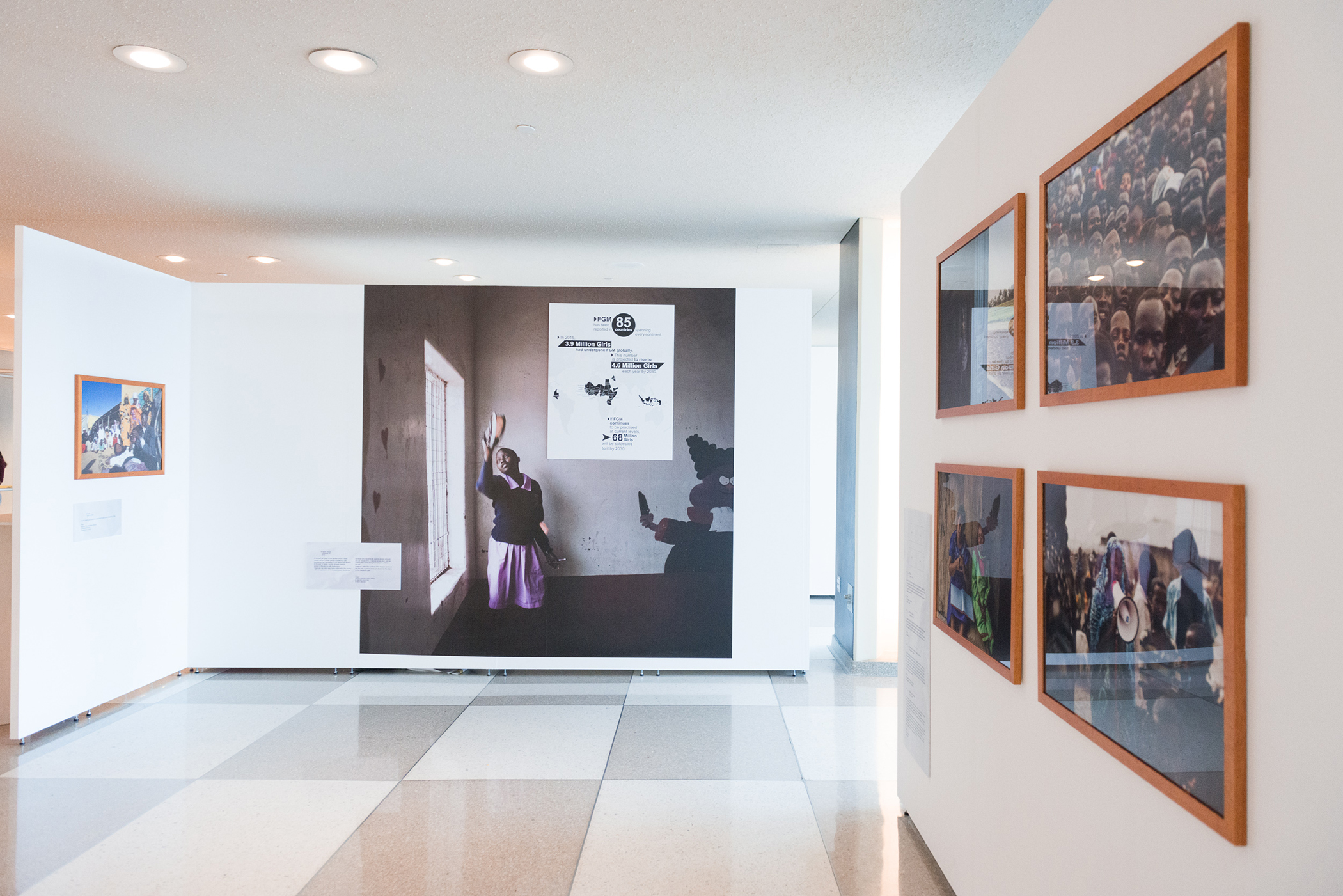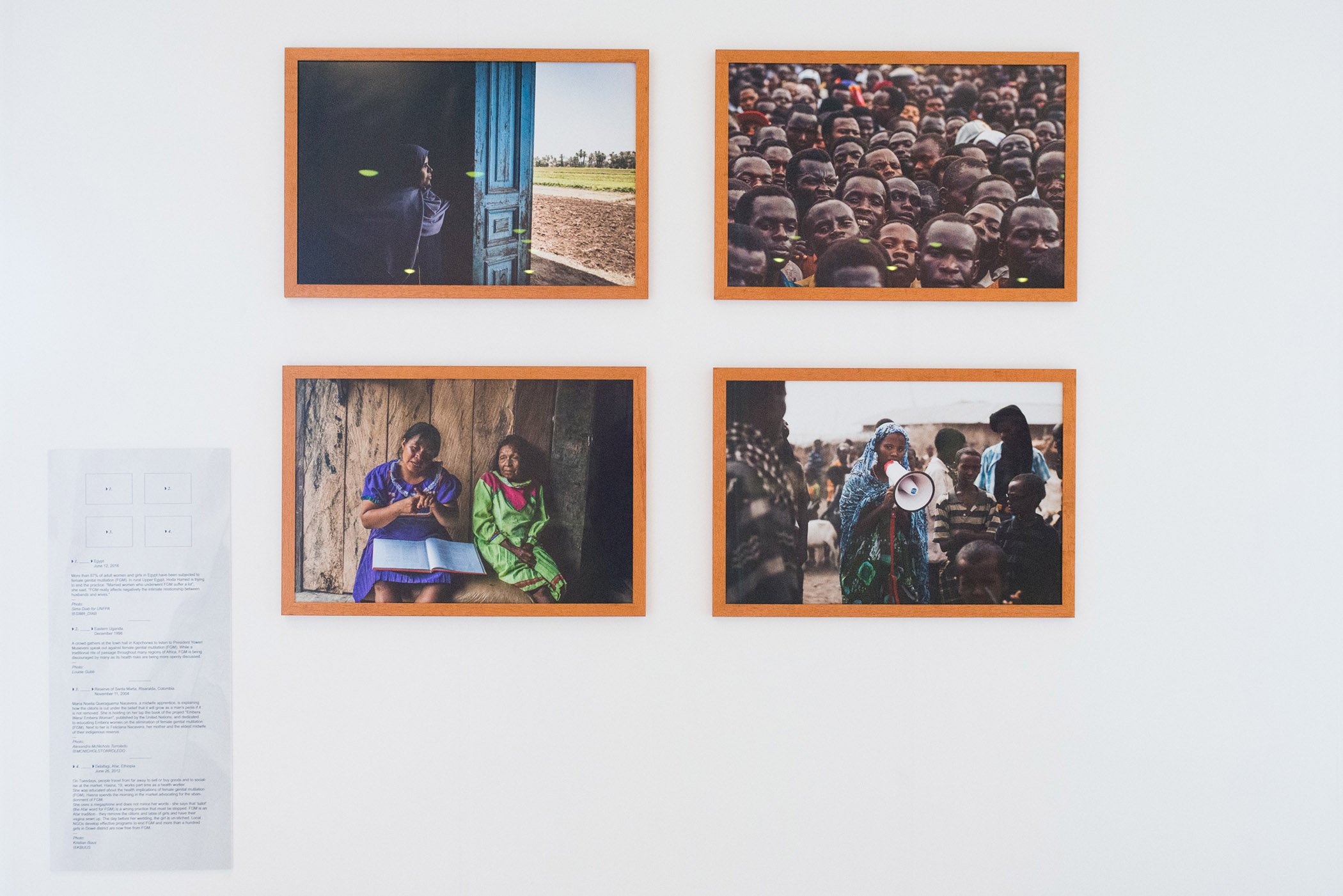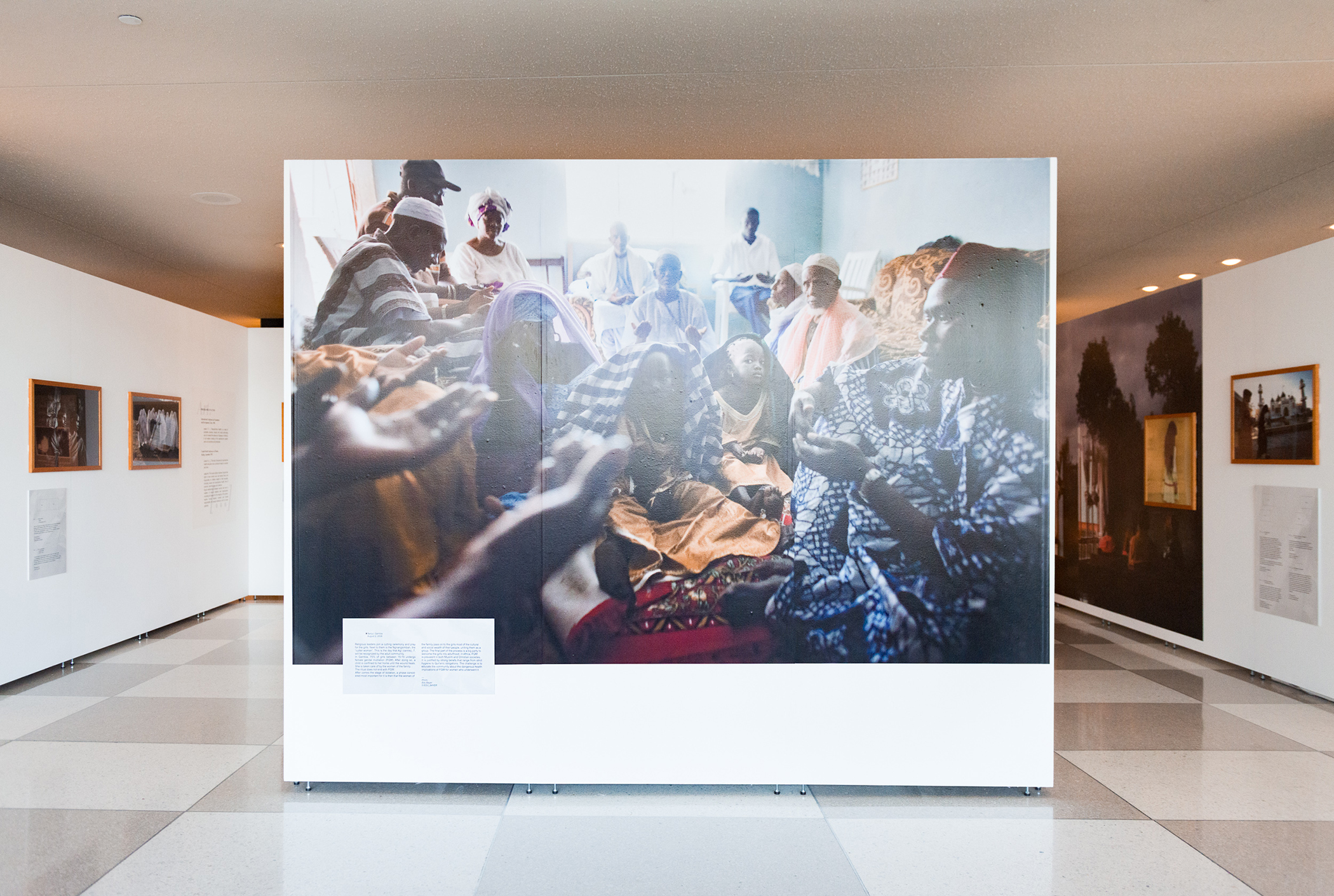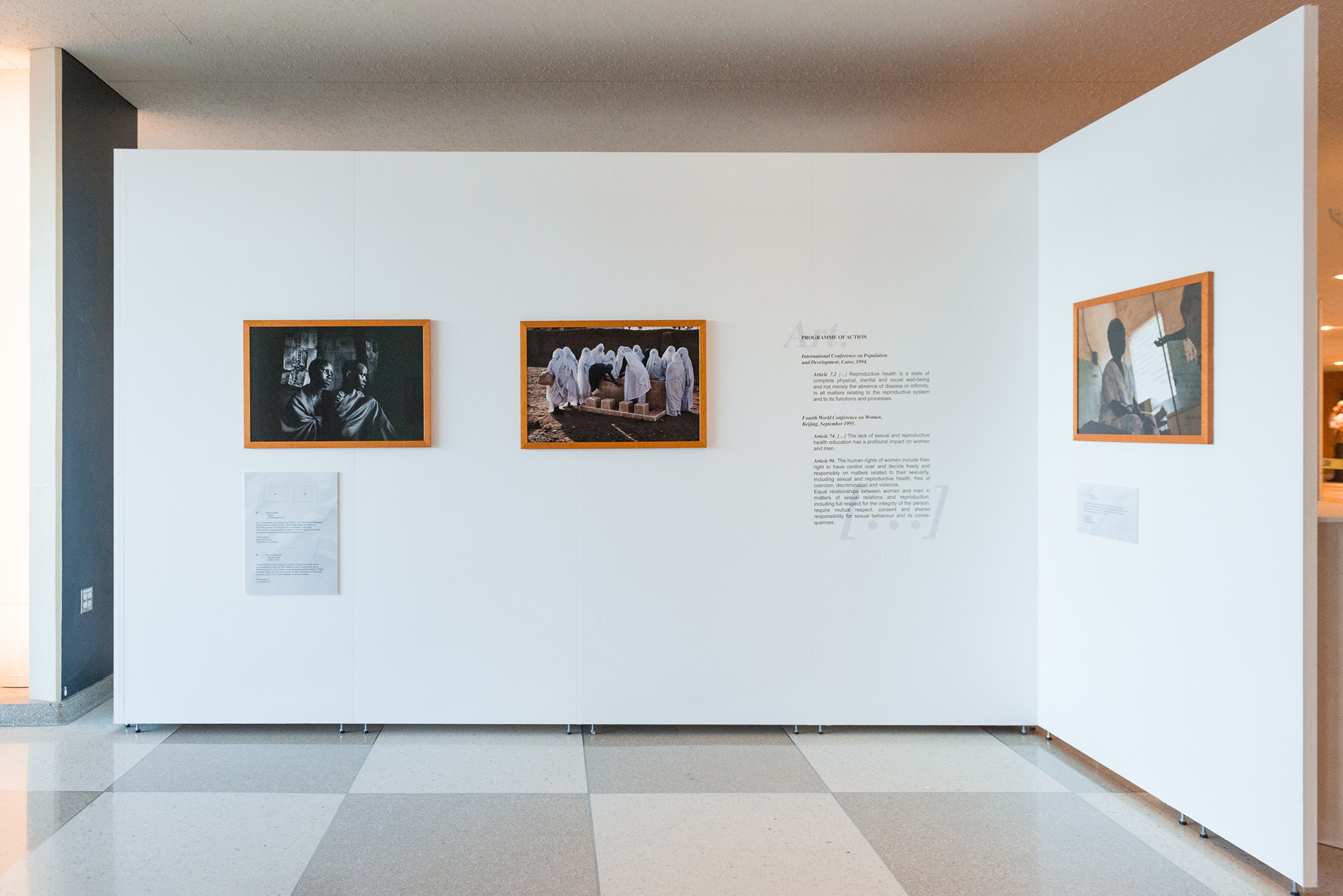An estimated 200 million women and girls today have been subjected to female genital mutilation (FGM) around the world, and another 68 million stand to be cut by 2030 if no action is taken.
But a new photo exhibit in New York aims to raise awareness and prevent that.
Media agency Dysturb partnered with the UNFPA to launch a public exhibit on Feb. 6 entitled “Female Genital Mutilation: 68 Million Girls at Risk." It's currently on display at the UN headquarters in New York, and mural-sized public posters shedding light on the issue have been plastered across the city.
Take Action: Not One More: Help Global Citizen End Female Genital Mutilation
The project highlights a range of issues attached to the practice, including a geographical look at its prevalence, but its primary goal is to provide a platform for those who speak out against FGM.
 In the Maasai village of Lenkisem, girls between 9-16 participate in a two-day ceremony that brings girls from surrounding villages to one school. They bonded while being educated on their basic rights and why female genital mutilation (FGM) is unhealthy.
In the Maasai village of Lenkisem, girls between 9-16 participate in a two-day ceremony that brings girls from surrounding villages to one school. They bonded while being educated on their basic rights and why female genital mutilation (FGM) is unhealthy.
In the Maasai village of Lenkisem, girls between 9-16 participate in a two-day ceremony that brings girls from surrounding villages to one school. They bonded while being educated on their basic rights and why female genital mutilation (FGM) is unhealthy.
Dysturb is an “alternative media” that uses city streets to present global stories, and it was first launched in 2014 by a group of photojournalists, writers, and artists. They had all been covering stories of conflict, humanitarian crisis, and climate change for many years, and felt disheartened by the fact that these stories were only seen for a day or week in their usual outlets. They had also noticed an increasing mistrust of traditional media.
“We wanted to give life to these stories and also reconnect with the audience,” Benjamin Petit, Dysturb co-founder, told Global Citizen.
The group's first activation took place in Paris. It wasn't focused on a theme or political event, but on international news stories, shedding light on issues like conflict in Syria, the West Africa Ebola outbreak, and the civil war in the Central African Republic. It was well received and they were soon contacted by organizations looking to partner on creating solution-based content — such was the case with the UNFPA.
“The issue of FGM is not breaking news so it’s more difficult to have it featured in news outlets,” Christian Delsol, media specialist for the UN, told Global Citizen. “We decided to work with Dysturb because the idea of having posters has a lot more permanence than trying to pitch this to the news media.”
 Thai girls walk past Pattani Central Mosque before the evening prayers. Women in the region are encouraged to cut their daughters under the assumption that it will control their sexual urges in adulthood and make them “clean."
Thai girls walk past Pattani Central Mosque before the evening prayers. Women in the region are encouraged to cut their daughters under the assumption that it will control their sexual urges in adulthood and make them “clean."
Thai girls walk past Pattani Central Mosque before the evening prayers. Women in the region are encouraged to cut their daughters under the assumption that it will control their sexual urges in adulthood and make them “clean."
Delsol had seen Dysturb’s climate change campaign in Paris and thought its approach would work to amplify their message outside the walls of the UN, bringing it to a much larger audience.
"It was really important for us to pair this exhibition with an action in the public space and to go in different communities, different areas of the city," Petit said, adding that the posters can be found in the Bronx, Manhattan, and Brooklyn. "It's also a very effective way to reach a wider audience."
UNFPA works with UNICEF on the world’s largest program to end FGM. It focuses on 17 African countries, providing support to both regional and global efforts.
“I think that there’s a lot of things that [have] moved forward, and we need to recognize that,” Nafissatou Diop, senior adviser and coordinator for the UNFPA-UNICEF Joint Programme on the Elimination of FGM, told Global Citizen. “This exhibition was also to show how things are moving forward.”
She references a particular series of photos in the exhibit that highlights the first generation of girls who have not undergone FGM as an example of that.
“It’s incredible how a girl that has escaped from this practice ... can be very vocal, and very strong and want to really move their community — brothers, sisters, father, aunt, and everybody around — to make this also a reality for other girls,” Diop said.
At its core, the exhibit is meant to highlight those who made change possible, from activists to teachers to politicians, she said.
 Young girls study inside the mess hall of the Tasaru Safehouse for Girls. The Tasaru Safehouse supports board, lodging and education of young Maasai girls from preteens to late teens who seek refuge from female genital mutilation (FGM) and early marriage.
Young girls study inside the mess hall of the Tasaru Safehouse for Girls. The Tasaru Safehouse supports board, lodging and education of young Maasai girls from preteens to late teens who seek refuge from female genital mutilation (FGM) and early marriage.
Young girls study inside the mess hall of the Tasaru Safehouse for Girls. The Tasaru Safehouse supports board, lodging and education of young Maasai girls from preteens to late teens who seek refuge from female genital mutilation (FGM) and early marriage.
“There is a whole group of people who are coming together in a given country to make sure that they are protecting those girls and that the girls are not going through the practice anymore,” Diop said.
She noted that countries with high prevalence rates in the past are seeing a decrease thanks to policy changes, education, and raising awareness.
But Diop stresses that while visibility is crucial in raising awareness, efforts need to go beyond that in order to truly eliminate the practice of FGM for good.
A holistic approach is needed — initiatives need to address the social norms of this practice and reach everyone who could be involved: religious leaders, health care workers, survivors, advocates and activists, NGOs, and governments.
That’s why it was so important to showcase various aspects of FGM in this exhibit, Petit said. The Dysturb team had to think through how to best approach this creatively, because FGM is so often represented by imagery of hands holding blades.
“We also wanted to go away from that representation and include different stories of survivors of FGM, of activists fighting against it, of awareness campaigns,” he said. “We wanted to show all the different aspects around this issue.”
 Fraipont, Belgium. September 10, 2014.
Fatoumata fled her native Guinea in order to prevent her young daughter, Binta, from undergoing female genital mutilation (FGM).
Fraipont, Belgium. September 10, 2014.
Fatoumata fled her native Guinea in order to prevent her young daughter, Binta, from undergoing female genital mutilation (FGM).
Fraipont, Belgium. September 10, 2014.
Fatoumata fled her native Guinea in order to prevent her young daughter, Binta, from undergoing female genital mutilation (FGM).
The exhibit has been well-received both online and offline, according to Petit and Delsol.
“More and more people want [to know] more about how to get involved, how to do something, how to act,” Petit said.
The response on social media, which is connected to Dysturb’s larger #WomenMatter campaign, has been particularly good. There has been dialogue created around the issue itself, and various organizations have since reached out due to the exhibit’s exposure, Petit said.
The goal set by the UN is to achieve the elimination of FGM by 2030. Petit can’t say for sure if that goal will be reached within the next 11 years, but he feels hopeful about moving things forward.
“What I know is for sure is the goals through ... photojournalism is to put in connection the people affected by the news or affected by humanitarian crisis or these kind of harsh traditions with people ... who potentially help,” he said.
And that’s exactly what this exhibit can do.
“Female Genital Mutilation: 68 Million Girls at Risk” will be on display from Feb. 7 to March 31 in the UN visitors lobby. You can find the locations of the mural-sized posters across the city here.
